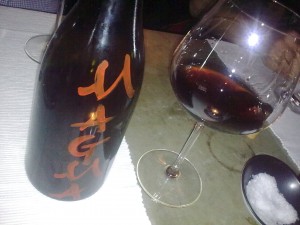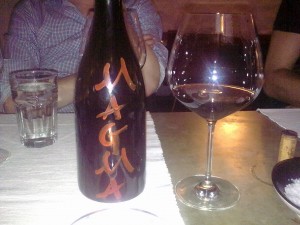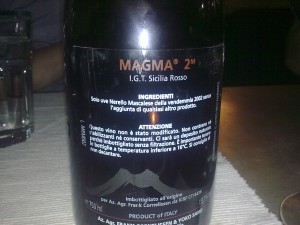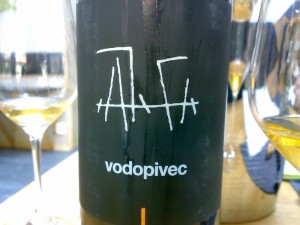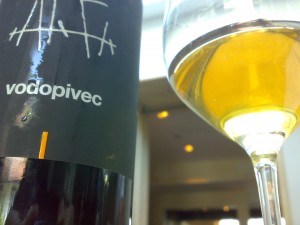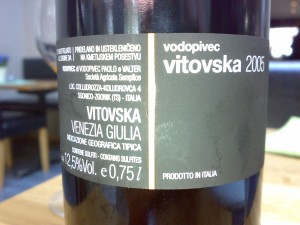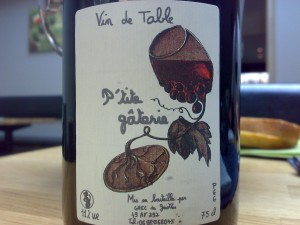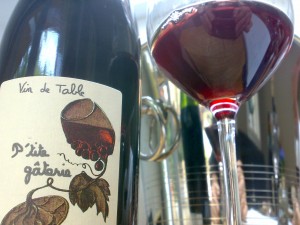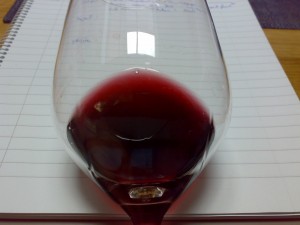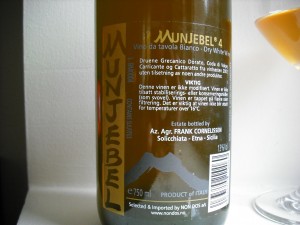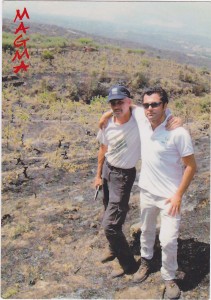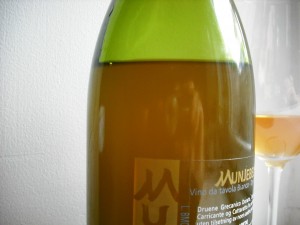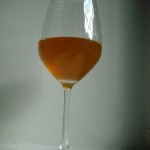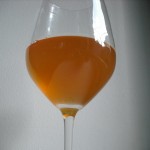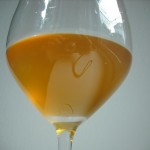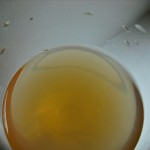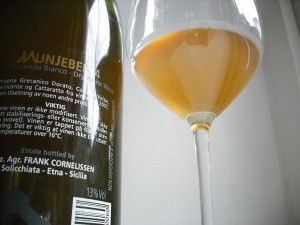Jun 16, 2009
A tasting note: 2002 Frank Cornelissen Magma 2 Marchesa
I have written before about Frank Cornelissen. To refresh your memory, click here for one of my previous tasting notes and more about Frank.
I may not have mentioned this before, but I feel very fortunate to live in Norway when it comes to wine. We do get our hands on some pretty obscure and rare wines that very few other places in the world get. This wine is no exception. The 2002 was his second vintage in which he produced about 2000 bottles total between the 3 Magma’s and one Rosso del Contadino. In this vintage, Frank Cornelissen produced 3 different single-vineyard bottling’s of the Magma 2. The Calderara, Trefiletti and the Marchesa vineyards. Approximately 1300 bottles of the Magma’s were produced. That’s it.
The Marchesa vineyard is an ungrafted vineyard which is normally very sun exposed and has a good balance between tannins and density. According to Frank, this was a “backward” vintage, and therefore the alcohol was rather low, even harvesting as late as November 2nd. Harvest of the Nerello Mascalese grapes are done by hand and the grapes are foot trodden. The wine was fermented in Amphorae buried in the ground up to the neck (to keep the Amphorae from exploding during fermentation). Only indigenous yeasts are used of course, and the wine is left to macerate with the skins for between 5 and 6 months. The wine is bottled directly from the Amphorae without fining nor filtration. Nothing is added nor taken. No added SO2.
504 bottles of the Magma 2 Marchesa were produced, approximately 150 came to Norway. Like I said, I feel fortunate to live in Norway. Price at time of release, 1000 Norwegian Kroner ($155).
Bottle opened at 22:45:
Appearance: Very light red but within 15 minutes darkening to a darkish purple, black then going back to red again within a few minutes. This is certainly a “living wine”.
Nose: Crushed rose pedals, dark plums, rose hips. Very farmyard, especially dead sheep (the specific dead sheep comparison came from my two Norwegian friends who were tasting with me). Wild, sour, small cherries. Hints of dark cocoa. Hints of Macadamia nuts, eucalyptus. Much more tight and precise than it was the first time I tasted this wine back in 2006. If you breath in deeply, hints of prune juice without the dried fruit aspect.
Palate: Extremely concentrated but very light and fresh with red fruit dominating. Within a few seconds, the tannins arrived and held firmly. None of us could sense the 13.7% alcohol, it was extremely well integrated. The acidity was medium plus and very ripe and “sweet”, but the wine is bone dry. Hints of plums that have been picked a week before being over ripe, the fruit is very ripe. No dried fruit evident. Sour fruits. Every sip seems different and has you going back for another. The wine will most likely run out before we finish analyzing this bottle. There is a slight nuttiness on the finish with super-ripe fruit that lingers and these two aromas add incredible complexity to the wine. One of the most fantastic and interesting wines I have ever tasted, again.
23:15:
Tannins really stepping up, but not dominating. More nutty macadamia’s starting to show.
23:30:
This is the hard part of this entry, having to write and report the following:
The wine seems to be “dying”. The finish seems to fade quickly now. The 3 tasters all agreed that the wine was now dead. Perhaps if we had waited, and if we had any wine left, the wine would have come back alive. I am not sure. I should also mention that this wine was not stored perfectly.
To conclude, I feel that this wine will throw many old school wine people off. I believe they will most likely say that the nutty aspects of the wine are signs of oxidation and therefore this wine is not a good wine, and therefore not well-made. This being said, you have to remember that when judging a wine, you must do so as objectively as possible. You cannot let your personal opinion of weather or not you like the wine enter into the equation. There are many well-made wines that I just don’t like, that doesn’t change the fact that the wines are well made.
The facts about the Magma 2 Marchesa are that this wine is well made, has tremendous concentration, complex aromas both on the nose and palate, is extremely well-balanced and the finish seems to never end. These are
facts that are undeniable and in my opinion reflect an excellent, well-made wine. Don’t get distracted by the nutty aromas and forget the aforementioned quality attributes.
Translation of back label:
Ingredients: Only Nerello Mascalese Grapes from the 2002 harvest without the addition of any other ingredient.
Attention: This wine has not been modified. It doesn’t contain stabilizers nor preservatives. There will be a natural deposit because the wine has been bottled without filtration. It’s important to store the bottle at temperature of less than 16°C (60.8° F). It’s recommended to not decant.
